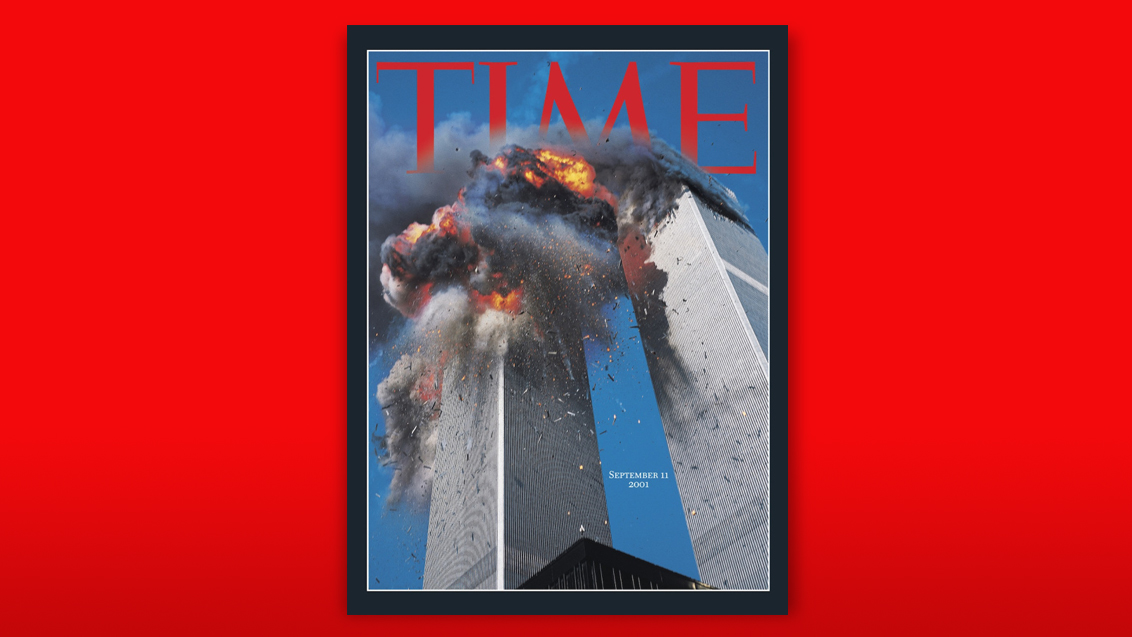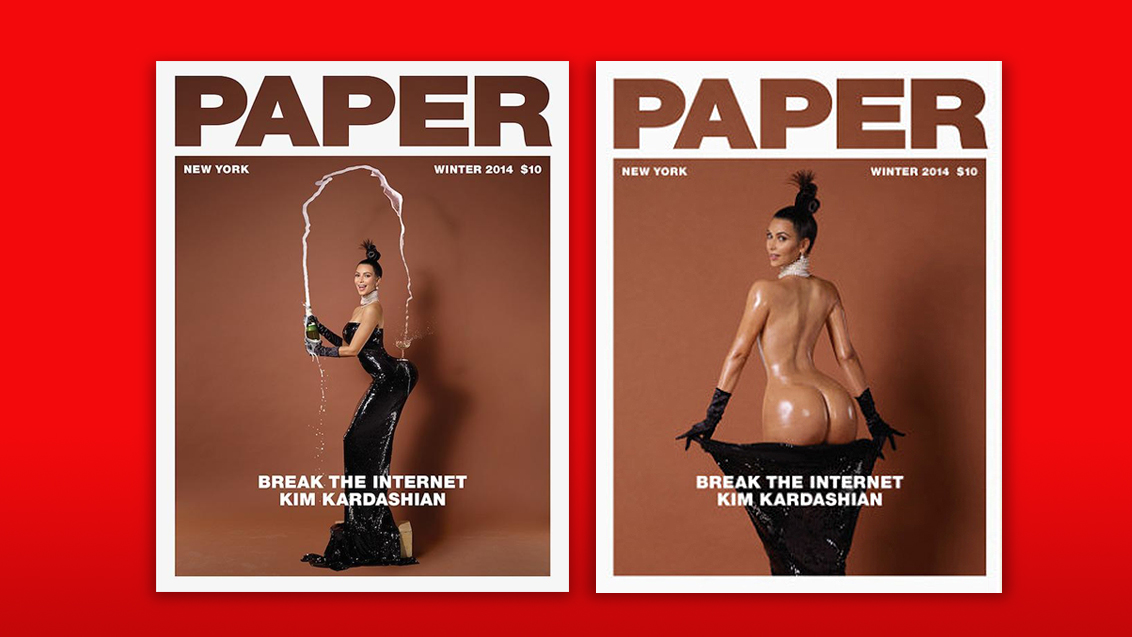8 of the most controversial magazine covers of all time
Having a controversial magazine cover is a surefire way for a mag to grab attention, and (hopefully) extra sales. Even as print magazines' circulations and influence wane, sex and politics can still provoke social media meltdown, although just exactly what is considered controversial is an ever-shifting boundary.
Some publishers try too hard – going for the print equivalent of click bait. The cast of Glee cavorting in school uniforms for GQ? Cue weary eye roll. At other times, passionate political engagement can lead to terrible consequences, as was the case with the Charlie Hebdo tragedy.
And often, of course, it’s difficult to distinguish between shock and satire: was Lady Ga-Ga’s machine gun bra cover for Rolling Stone a sophisticated feminist statement, or just a bad joke? Readers will inevitably consider the merits of each cover against their own moral compass.
But whether cynically conceived or not, controversial covers seldom fail to raise title circulations for publishers who dare to take a risk. Here are eight of the most controversial in magazine history.
Want to know how to make a mag cover standout, without necessarily offending people? See our guide to creating standout magazine covers. And if you're not quite magazine cover level yet, see our guide to becoming an art director.
01. Esquire: The Passion of Muhammad Ali cover (April, 1968)

If the 1970s hosted some of the worst examples of gory misogyny dressed up as liberalism, it also delivered some of the most politically engaged and memorable magazine covers.
With Esquire’s Muhammad Ali interview focusing on the boxer’s dwindling star status and divisive political statements, legendary art director George Lois suggested that the beleaguered sports legend pose as Christian martyr St Sebastian for the cover shoot. Carl Fischer’s resulting photograph of a bloodied Ali pierced by the arrows of his critics simultaneously addressed race, celebrity and contemporary politics with startling force. At the height of the civil rights movement and with anti-Vietnam war protests at their most fierce, it was impossible not to have a strong reaction to Ali’s martyred pose.
Daily design news, reviews, how-tos and more, as picked by the editors.
The Ali cover was doubtless the inspiration for Rolling Stone’s 'Passion of Kanye West' cover forty-eight years later, a non-too-subtle nod from one self-mythologising, ‘misunderstood’ celebrity to another.
02. Rolling Stone: John and Yoko (January 1981)

Sometimes a cover becomes controversial for reasons beyond the publisher's control. This iconic photograph of a naked John Lennon curled around a fully clothed Yoko Ono ("That’s it! That’s our relationship", Lennon is quoted as exclaiming) was daring enough in its own right, with its provocative mix of sex, gender politics and the always outspoken ex-Beatle.
But Lennon’s assassination, just a few hours after this Annie Leibowitz photo session, transformed a provocative image into a tragic memorial. When Rolling Stone used this as the cover of its tribute issue to the singer, five weeks after his death, it had an entirely different context.
Music magazine Q was similarly struck by unforeseen circumstances when its Michael Jackson ‘unmasked’ issue went to press just before the singer’s sudden death. The shocking photograph of Jackson, his face seemingly ravaged by plastic surgery, made for a morbid but entirely coincidental obituary.
03. Time: An American Tragedy (June, 1994)

From their famous, type-only 'Is God Dead?' cover to the (perhaps) less high-brow 'Yep I’m Gay' Ellen DeGeneres “confession”, Time has always proudly courted controversy.
Ironically, its O J Simpson American Tragedy cover remains its most (in)famous cover, as it provoked an unprecedented scandal. Both Time and rival news journal, Newsweek, had the same cover image – the police mugshot of the double-homicide suspect. But with the two titles sat side-by-side on the newsstands, it was clear that Time had radically altered the Simpson photo, making his skin appear darker.
Time denied any malicious or racist intent behind its retouching, insisting that their art editor had simply editorialised the photo, but the publication was forced to apologise. And in an surreal twist of fate, the cover was subsequently used by Simpson’s defence team as alleged evidence of racism and bias in the media.
04. Rolling Stone: Britney Spears, Hanging on the Telephone (April, 1999)

The Britney Spears cover for Rolling Stone in April 1999 set the tone for the celebrity sexploitation frenzy of the new millennium. Compared to magazine covers of the following decade, this may looks pretty tame now, but David LaChapelle’s scandalous cover photo let the (sleaze) genie out of the bottle: a seventeen-year-old pop star, stripped to her underwear, lying in bed with a cuddly toy, her expression suggesting it was you who was the voyeur she was talking to on her phone.
If accounts differ as to who exploited who for this provocative cover, there’s little doubt that as a template for attention-hungry stars and (allegedly) deviant snappers, this Rolling Stones cover became the holy grail of sleaze.
05. Time: 9/11 (2001)

When Lyle Owerko photographed the first of the twin towers in flames, he remembers thinking, "There’s your cover. The one tower that’s smoking and the (other) one that’s stoic and defiant." But then he heard the terrifying sound of a second plane on the horizon. He turned to capture the second collision as it happened. The resulting photograph could not have been more sensational or shocking (read more about the story of this photo on Time's website).
As the days, weeks and years passed, magazine coverage of the tragedy adopted a more elegiac tone – Art Spiegelman’s monochromatic design for The New Yorker shows how over the passage of time, editors and designers tried to communicate the horror of 9/11 beyond the documentary eye – but Time magazine was one of the first titles to cover the story, and Owerko’s graphic photo accurately reflected the first responses of the world at large.
06. Paper: Break The Internet Kim Kardashian (2014)

What to do when your industry (magazine publishing) is being demolished by an unstoppable foe (the internet)? Try and catch a free ride on its coat tails.
When hip New York lifestyle magazine Paper hired legendary celebrity snapper Jean–Paul Goude to photograph reality TV queen Kim Kardashian for two covers (dressed and undressed, of course), it made sure to tweet the covers just before the magazine came out for maximum attention.
Although the Paper team didn’t quite succeed in their ambition of breaking the internet, they almost broke their own homepage, which jumped from an average of 20,000 daily visits to 395,000 on launch day, and upgraded Paper from being a magazine hardly anyone read or knew about, to a magazine that hardly anyone read.
Aware of the important cultural taboos regrading sex, exploitation, race and motherhood that her covers would provoke, Kardashian opened the debate with characteristic thoughtfulness in a tweet that read: “And they say I didn’t have a talent...try balancing a Champagne glass on your ass LOL #BreakTheInternet.”
07. Ladybeard: Beauty issue (May, 2018)

Calling your magazine Ladybeard might be considered attention-seeking behavior before you even get to the first cover image (a framed dildo, since you ask) but this kickstarter-founded, indie-feminst title has continued to push the boundaries.
For its Beauty themed issue, it showed it was prepared to risk everything – from reader revulsion to stockist withdrawal – in the name of heated debate, with not one but two taboo-busting cover photographs by Anton Gottlob: one an elderly woman’s mouth, the other an extreme close-up of an anus.
Co-editor Madeleine Dunnigan admitted to MagCulture that both covers caused “controversy, debate and tears within the team....”, but insisted that by showing (traditionally) unshowable images, important debates could be triggered. ‘It may be impossible to say what is beautiful, or what should be beautiful,” Dunnigan explained, "but we hope that these covers will make the viewer consider the question.”
With indies like Ladybeard distributed by mail or independent shops, the risk vs reward metric is lower than your average title stocked in WH Smiths. But Ladybeard's daring is representative of indie publisher's ambition to recapture the bravery of older, iconic magazines, albeit to a dramatically smaller audience.
08. Cosmopolitan: Tess Holliday (October 2018)

When makeup-artist turned dental receptionist turned fashion model, plus-size activist, social media sensation, pansexual Tess Holliday (formally known as Tess Munster) revealed to Cosmopolitan that she was experiencing the worst mental health state of her life: “I wish I could just disappear”, so a shame-busting shoot for Cosmo seemed the obvious course of action to steer her back towards emotional well being.
Published amidst a flurry of obesity-crisis debates, the Holliday cover was a perfect storm of headline-baiting, everyone-has-an-opinion controversy, and a rare recent example of a print magazine making headlines. Was it taboo-busting, pro self-love balm, or obesity-pedalling, voyeuristic trash? The debate about the reaction to the debate promoted more debate and the issue kept selling…
Dignity and feminist credentials still (allegedly) intact, Cosmopolitan proudly reported Holliday’s reaction to all the fuss: “My health is no one’s business. My message isn’t, ‘Let’s all be fat!’. My message is, ‘Let’s love yourself, regardless of how you look in your current body'” to which Cosmo’s Senior Entertainment & Lifestyle writer added her own, carefully nuanced critical support: “Yes. YES YES YES. Literally could not have said it better ourselves."
Read more:

Mark Wynne is an art director and designer with more than 20 years' experience in the publishing industry. He's been responsible for art directing and rebranding several popular magazine titles, including Official PlayStation Magazine and cult videogame title EDGE, and he was also Art Editor for Computer Arts magazine. Mark is one of Creative Bloq's go-to experts for all things related to design and branding.
